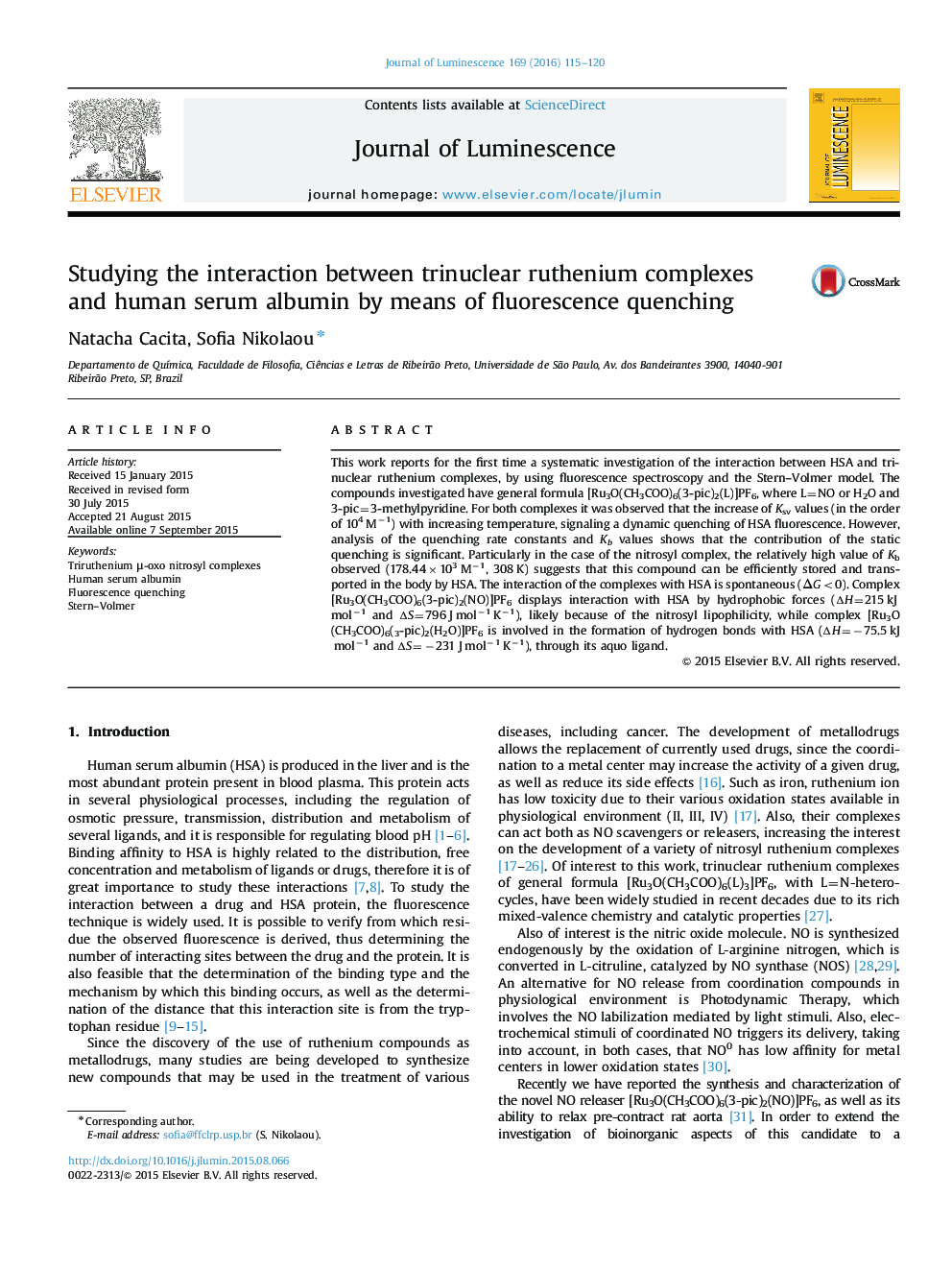| Article ID | Journal | Published Year | Pages | File Type |
|---|---|---|---|---|
| 5399218 | Journal of Luminescence | 2016 | 6 Pages |
Abstract
This work reports for the first time a systematic investigation of the interaction between HSA and trinuclear ruthenium complexes, by using fluorescence spectroscopy and the Stern-Volmer model. The compounds investigated have general formula [Ru3O(CH3COO)6(3-pic)2(L)]PF6, where L=NO or H2O and 3-pic=3-methylpyridine. For both complexes it was observed that the increase of Ksv values (in the order of 104Â Mâ1) with increasing temperature, signaling a dynamic quenching of HSA fluorescence. However, analysis of the quenching rate constants and Kb values shows that the contribution of the static quenching is significant. Particularly in the case of the nitrosyl complex, the relatively high value of Kb observed (178.44Ã103Â Mâ1, 308Â K) suggests that this compound can be efficiently stored and transported in the body by HSA. The interaction of the complexes with HSA is spontaneous (ÎG<0). Complex [Ru3O(CH3COO)6(3-pic)2(NO)]PF6 displays interaction with HSA by hydrophobic forces (âH=215Â kJÂ molâ1 and âS=796Â JÂ molâ1Â Kâ1), likely because of the nitrosyl lipophilicity, while complex [Ru3O(CH3COO)6(3-pic)2(H2O)]PF6 is involved in the formation of hydrogen bonds with HSA (âH=â75.5Â kJÂ molâ1 and âS=â231Â JÂ molâ1Â Kâ1), through its aquo ligand.
Related Topics
Physical Sciences and Engineering
Chemistry
Physical and Theoretical Chemistry
Authors
Natacha Cacita, Sofia Nikolaou,
